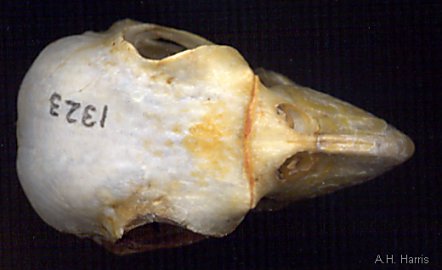
Little boys usually feel that they've really accomplished something if they manage to wiggle their ears—after all, what more should you need to impress little girls? They're really pikers, though. After all, even mice can wiggle their ears. Now moving bones of the skull? That's something different. Many Chihuahuan Desert inhabitants are well aware that snake heads are so loosely assembled that snakes can swallow prey bigger than their heads. Admittedly, the head tends to take awhile afterwards to regain normalcy, so esthetically it leaves a bit to be desired.
But birds, now—there's suavity, and most birds can put little
boys to shame in the head-movement business. Although we tend to think of the upper
bill of a bird as a fixed part of the skull, its base connects to the skull by a
thinned area of bone, forming a hinge of sorts, and the palate bones move to allow
flexibility against the underside of the skull. Not convinced? Watch a parrot shuck a
sunflower seed next time you get a chance, and shed your skepticism! 
Contributor: Arthur H. Harris, Laboratory for Environmental Biology, Centennial Museum, University of Texas at El Paso.
Desert Diary is a joint production of the Centennial Museum and KTEP National Public Radio at the University of Texas at El Paso.

View of parrot skull from the top. The orangish line separating the upper bill from the rest of the skull marks the hinge that allows the upper bill its mobility. Scanned specimen from the UTEP collection.